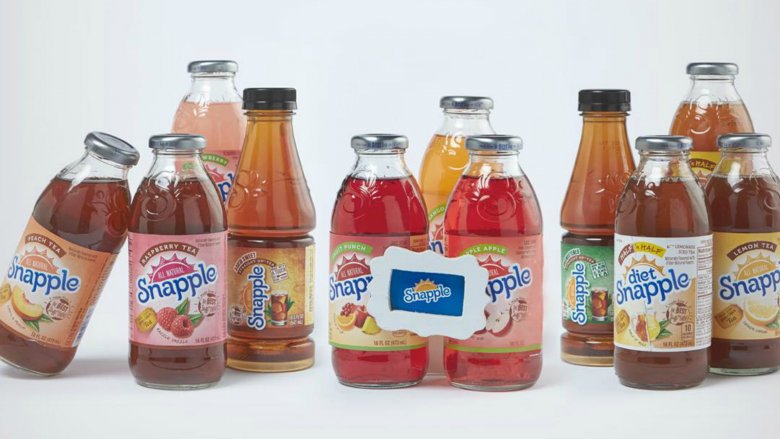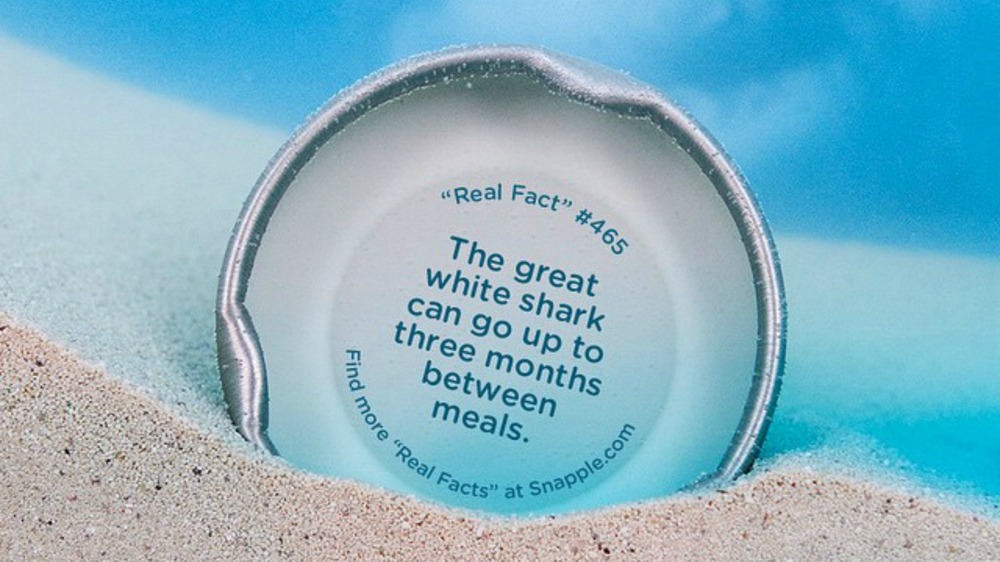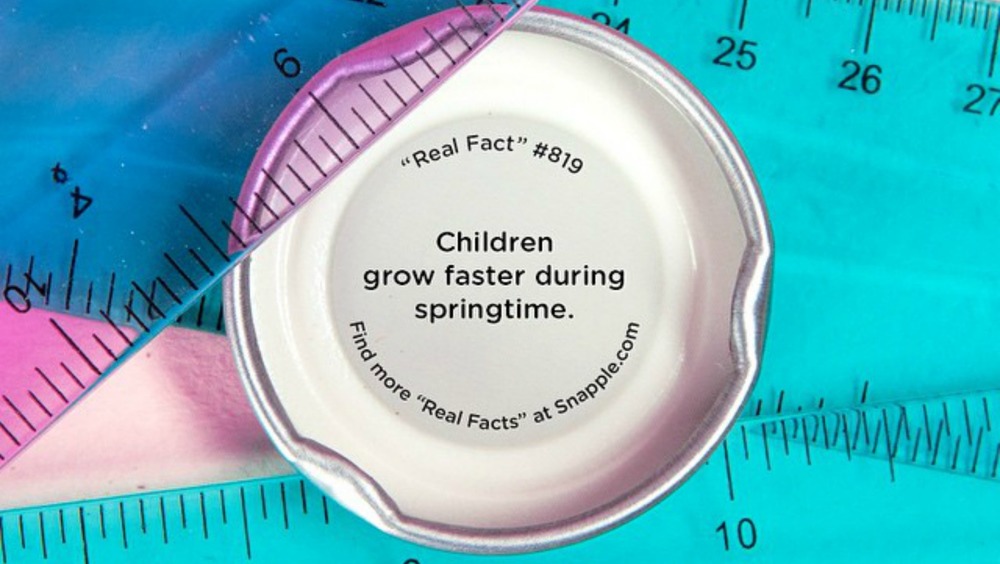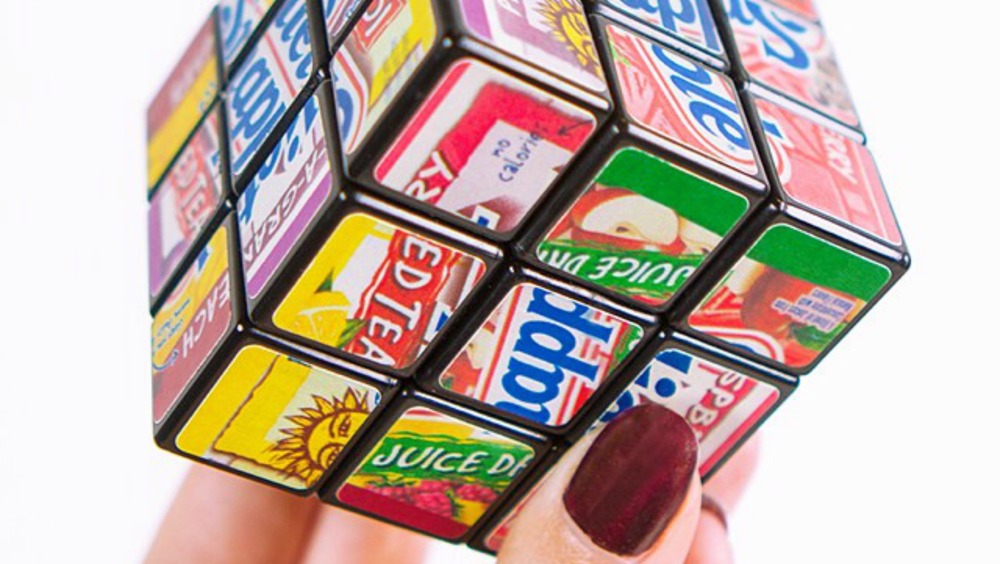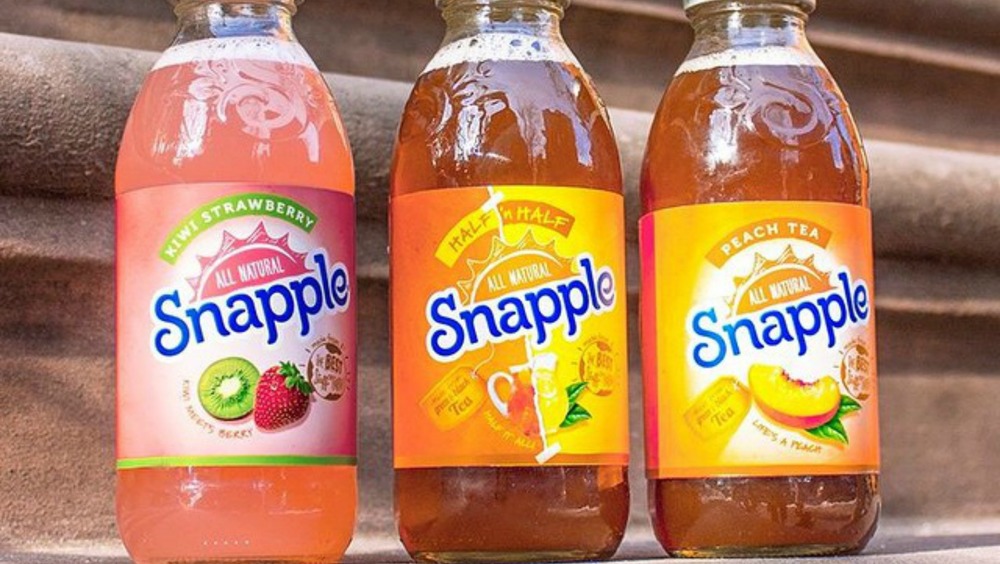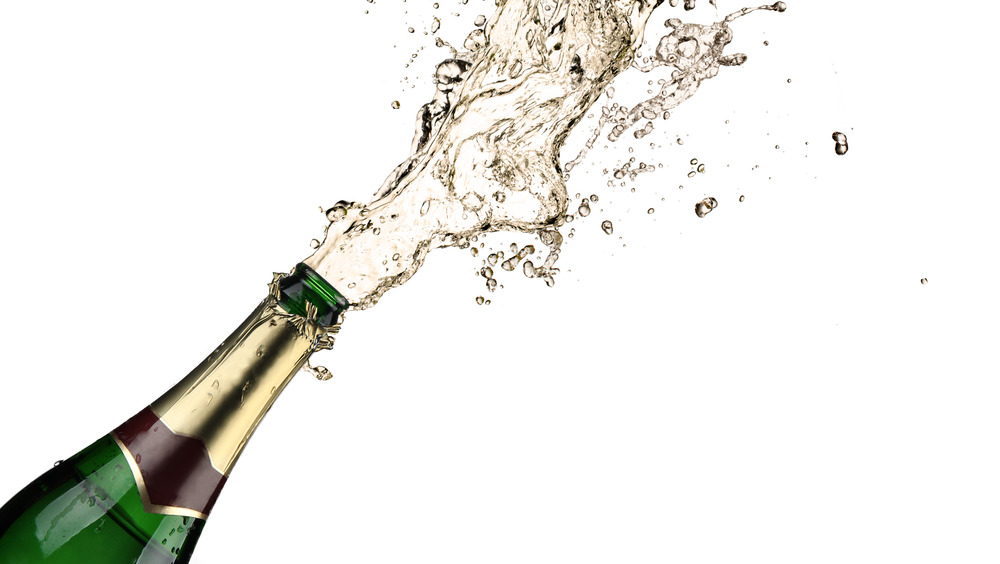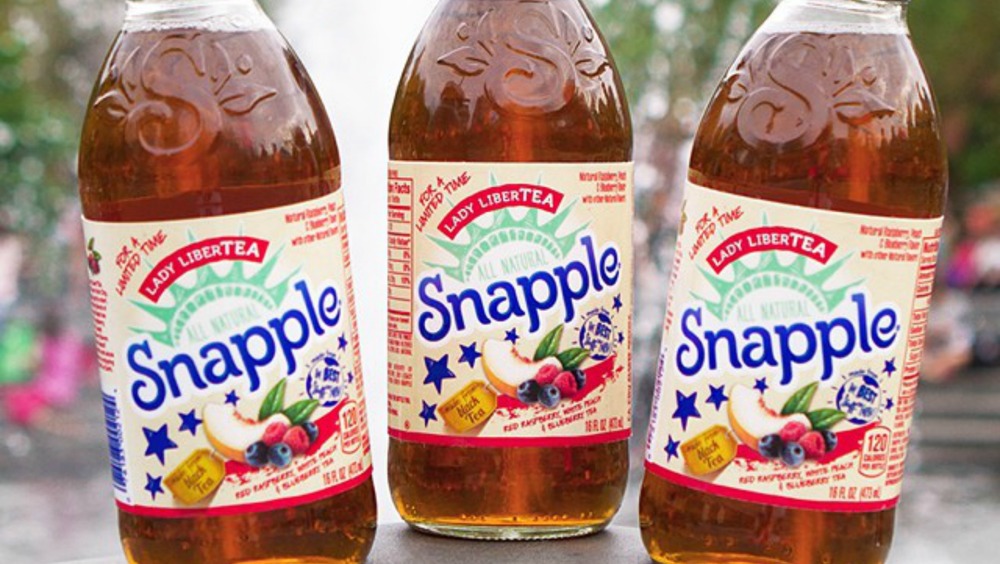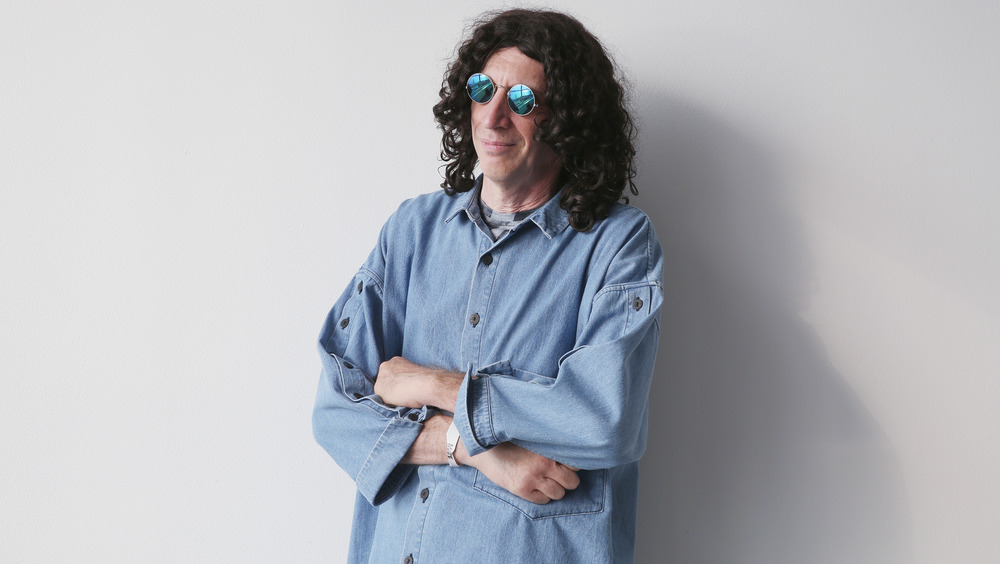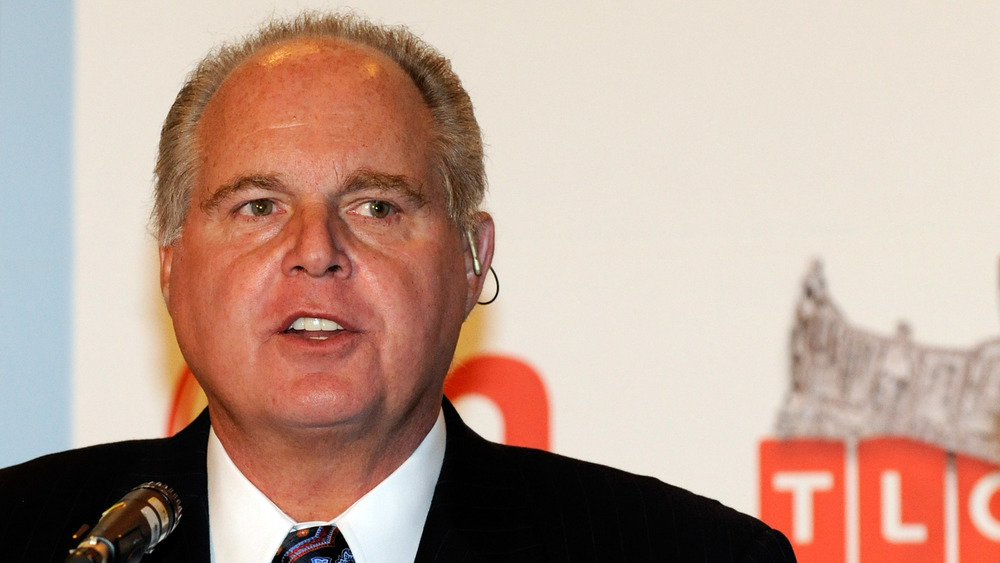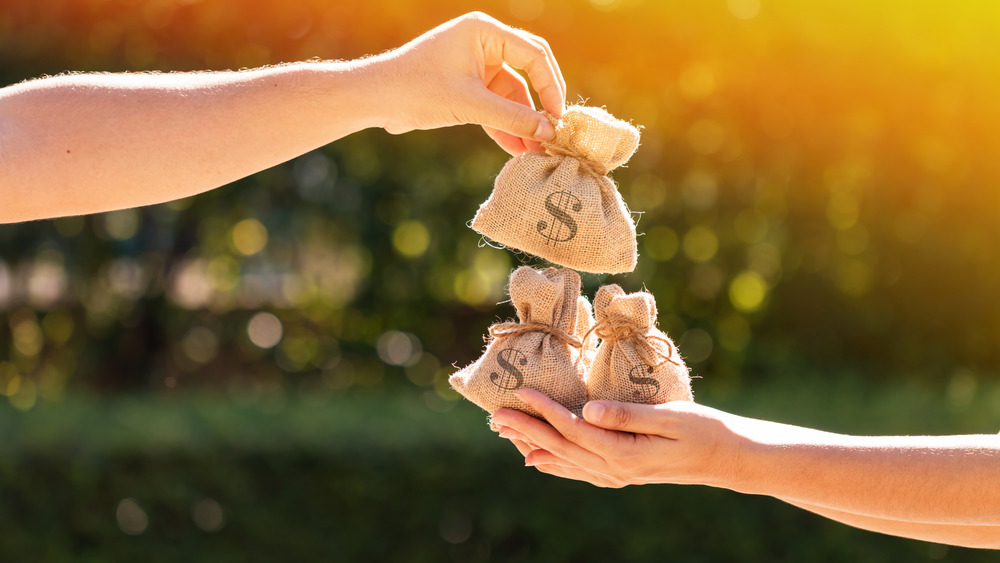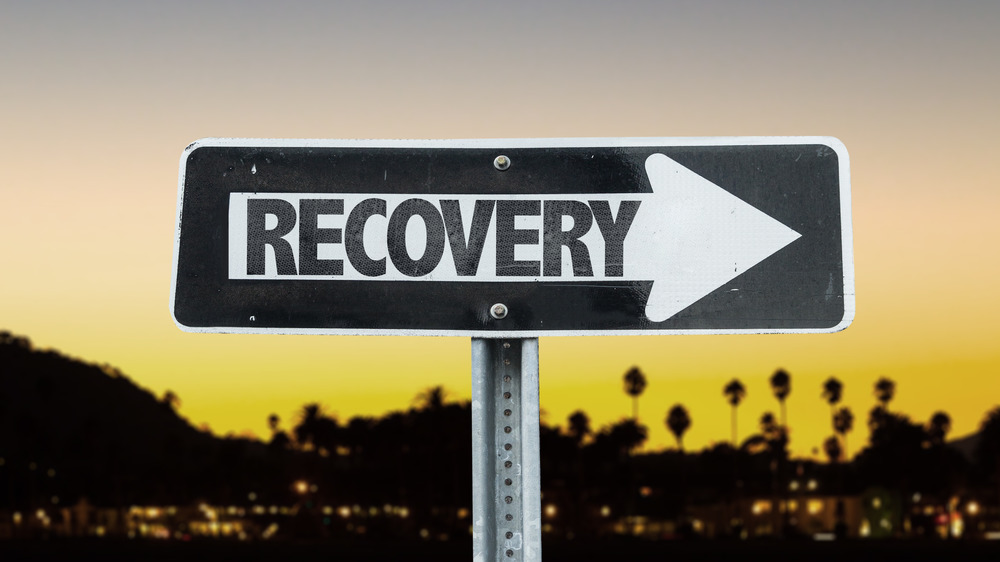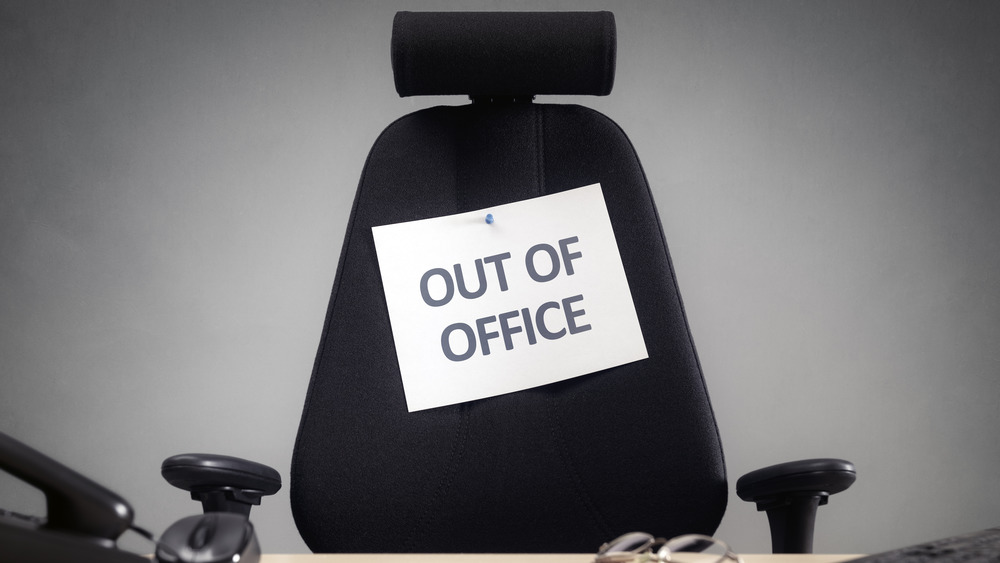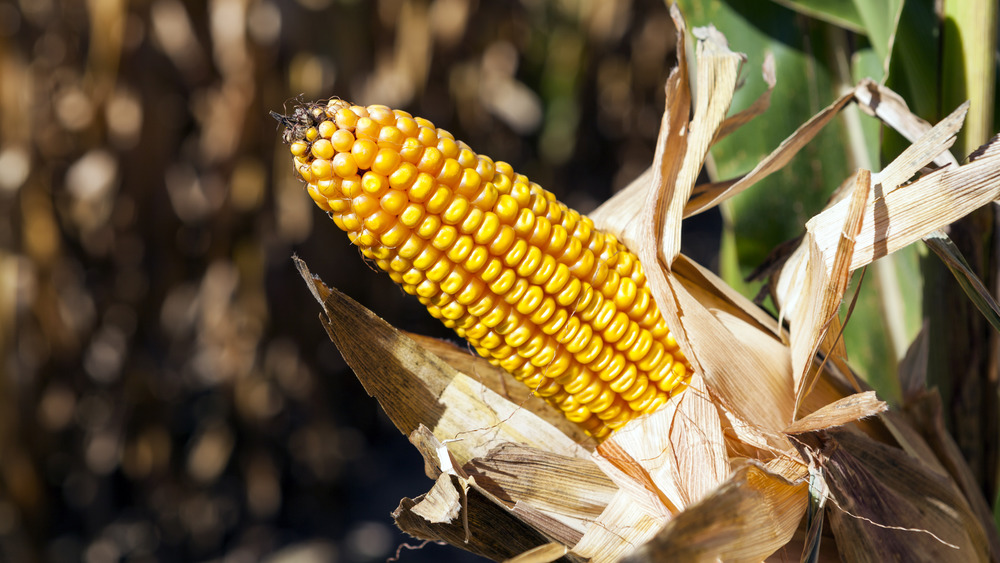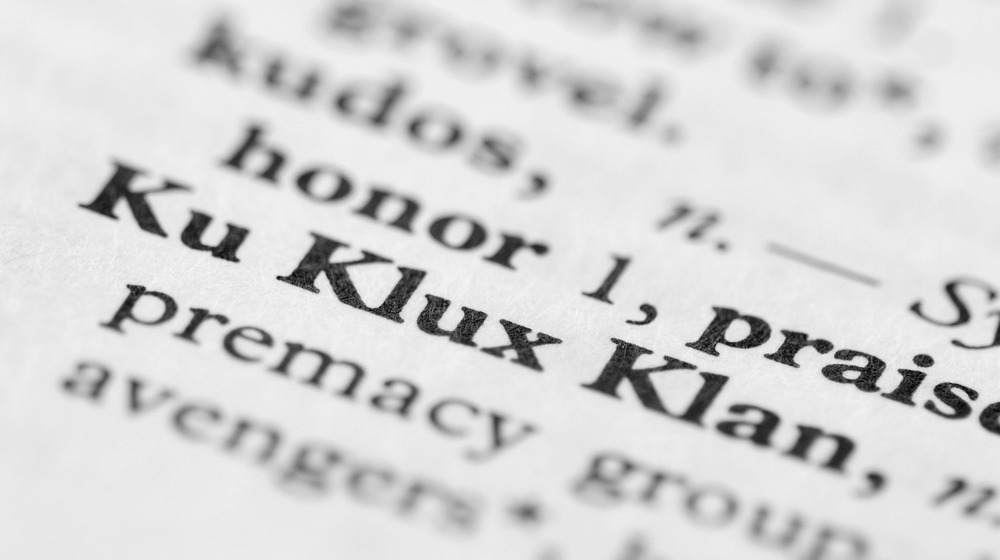The Untold Truth Of Snapple
Snapple has always appeared to be a feel-good, quirky company out to spread their love of juice to the world. From their "Real Facts" to responding to every piece of mail, Snapple has made a name for itself as a fun company. However there was plenty going on behind the scenes as well. Believe it or not, Snapple has had its fair share of challenges — and some of them might really surprise you.
The real facts idea came up in an ordinary marketing meeting
During a regular meeting one day, the marketing team at Snapple was trying to find a way to "amaze and amuse" their beloved Snapple drinkers. They ended up deciding to surprise customers with fun facts on the "unused real estate" under the bottle caps.
The Snapple team now has over 1,100 "Real Facts" circulating on bottle caps, and strives to add about 75 to 100 new facts each year. In the beginning, all facts came from the marketing team and agency. Now all employees and even consumers can submit facts — though they have to be interesting and verified by at least two quality sources.
Many of the facts have had to be retired, but there are some originals still in production. The first Real Fact was, "A goldfish's attention span is 3 seconds."
Many of the Real Facts aren't real
Snapple has been providing their Real Facts since 2002, and it seems they've been getting a few wrong since then. When The Atlantic fact-checked Snapple, it did not take their team long to expose just how many were off or just completely untrue.
Many of the facts were easily disproved by a phone call or Google search. For example, Real Fact number 70, "Caller ID is illegal in California," was proven to be wrong with just a check of California's Public Utilities' website. Some other facts seem impossible to actually fact-check, like the one that claims the most popular name for a pet goldfish is Jaws.
"They are real facts, and we have teams here that fact-check everything," Snapple's vice president of marketing David Falk told The Atlantic. "We go through a pretty vigorous process."
The company was started by best friends
Snapple was founded in 1972 by three best friends. Leonard Marsh, his brother-in-law Hyman Golden, and his childhood friend Arnold Greenberg wanted to sell juice to health food stores.
Marsh worked as a window washer before making the leap to business owner, and he and Hyman actually started a window washing business and kept it going after launching their new juice business. Even Greenberg kept running his health food stores to make sure they would still have options even if their new business wasn't successful. It's a good thing too, because it seems the founders didn't know too much about the new market they were hoping to break into.
In 1989 Marsh even told Crain's New York Business (via The New York Times) that he knew "as much about juice as about making an atom bomb."
They weren't always called Snapple
Snapple has such a fun ring to it. The name is memorable, but it didn't start out that way. Want to hear an absolutely forgettable brand name? Unadulterated Food Products. See, you already forgot it, didn't you? That was the original company name in 1972. What a difference one change can make, right?
The Snapple lady worked in the order department
Remember the Snapple lady? She was light and funny with an amazing New York accent. She was an actual employee at Snapple and started reading that fan mail for fun at work.
Wendy Kaufman starting working in the Snapple ordering department in 1991 and later moved on to working the publicity events. When one of the executives from Snapple's ad agency met Kaufman, he could tell she had something special, but others weren't so sure. "It was definitely controversial," Kaufman told US Weekly. "There were fights in the main office. 'How are you going to take the fat girl from the order department and put her on national TV?!'" However, that's just what Snapple executives did.
Snapple was still growing and didn't have a big budget. Featuring Kaufman reading real fan mail was a fun and quirky way to set themselves apart. It also meant they didn't have to shell out for a celebrity spokesperson. Between 1993 and 1996, Kaufman starred in 36 commercials, some of them award-winning.
The Snapple lady responded to every letter
Kaufman didn't start reading fan mail to get on the commercials. She was already responding to every letter out of the goodness of her heart. It also had something to do with a childhood crush.
"When I was a young child I fell in love with The Brady Bunch. That's the show that rang my bell. I fell in love with Greg Brady—the actor Barry Williams—and I wrote my one and only fan letter to Barry Williams. He never wrote me back. That taught me my first lesson about writing to somebody you care about and not being responded to," Kaufman told Chicago Reader. "Then I noticed letters coming in—people taking the time to write to us. They wanted a connection....I knew that I was going to connect and respond to every single person who wanted to be friends with us. I didn't do it to be in commercials, because I didn't know there would be commercials."
The company started with a bang
Because a company with the name "Unadulterated Food Products" was not going to make it big, the founders happily came up with the name Snapple after an exciting work day. While brainstorming new juice flavors, the founders developed a carbonated apple juice and decided to combine the words "snappy" and "apple" to describe it.
However, the Snapple Juice never made it to market. There was too much fizz and the bottle caps actually shot off the bottles when the juice was first bottled. Even though that flavor never made it, the founders liked the name so much, they reserved it for the entire company.
Iced tea turned everything around
Up until the late '80s, the small company focused on juice drinks. When Snapple introduced its first iced tea drink in 1987, things took off. The company when from $3 million in sales in 1986 to $700 million in 1994.
"We made the first ready-to-drink iced tea that didn't taste like battery acid," Greenberg told Chicago Reader. "It took three years to develop." Iced tea helped turn Snapple into a cool, quirky juice company that appealed to young people.
Howard Stern was the first spokesperson
As Snapple grew, they hired an advertising agency to help get the word out. Surprisingly, the agency's first recommendation was to partner up with radio host Howard Stern. Greenberg told Chicago Reader that he didn't even know who Stern was at the time. As only Howard Stern could do, he got the word out about Snapple by making fun of it, even referring to the company as, "crapple."
"He was nothing but good for us, very helpful in the development of Snapple," Greenberg shared. "We took a lot of heat sometimes for him, from women's groups, gay groups, black groups, Jewish groups...but they all listened."
However, Snapple pulled its advertisements from Stern's show after Stern made some offensive remarks following singer Selena's death.
Rush Limbaugh advertised for free
While Howard Stern was being paid by Snapple to make fun of them, Rush Limbaugh was recommending the teas and juices to his audience for free. He raved about them for six months before his producer recommended a partnership. Again, Greenberg didn't know who this radio host was, but signed on.
Limbaugh has stated that he feels he played a part in helping Snapple grow to the size it did. "In all these stories of what has happened to Snapple, you can't find any reference to the fact that they used to advertise nationally on this program," Limbaugh stated during his show. "And when that stopped, so went national sales. And you people all know it."
One partner got out too soon
Sadly the original founders of Snapple did not enjoy their success together. In 1972, the three friends partnered with Nat Langer, owner of L&A Juice, to form their company. Early on Langer was concerned the other three were holding out on profits. He decided to walk away from the company in 1984 and accepted a six-figure settlement for his 40% of the company. By 1994, that same 40% was worth $680 million.
It seemed as soon as Langer walked away, things took off. "All of a sudden," Greenberg told Chicago Reader, "we had a business."
The Snapple lady overcame a drug addiction
The Snapple lady reminds me of a tough, but loving mother. I imagined her walking down the halls of Snapple greeting everyone and bringing smiles everywhere she went. I certainly never imagined her as a drug addict, but that was her life before Snapple. In an interview with Oprah, Kaufman admitted that she was addicted to cocaine before landing the Snapple gig. "I did try coke, and I loved it. I started to do cocaine in 1980, right after I graduated college. By 1989, I could press my cheek and blood would come out of my nose. I was so sick that it really did bring me to my knees," Kaufman told Oprah (via Us Weekly). "I said to God, on my knees, hysterical crying, 'Either kill me or please, please help me get well. I cannot live like this for one second longer.'"
Thankfully Snapple entered Kaufman's life, and she decided to make a change. "What most people don't know about me [is] Snapple was much more than a job," she explained. "It was a lifeline and it was a way for me to stay sober. And it was a vehicle to do wonderful, nice things for other people." Kaufman told Oprah she found a new purpose with her Snapple lady persona and never went back to the drugs.
No one knows why the Snapple lady was fired
Sadly, the Snapple lady couldn't last forever. After 1994, things started turning south for Snapple. Sales decreased, and when Quaker bought the company, Wendy Kaufman was let go. There was never a clear answer why, but some people both inside and outside the company had suspicions.
Rumors of her being "too New Yorkish" surfaced. It seemed Quaker wanted to make Snapple more mainstream, and Kaufman did not fit with their new vision.
During this time, Quaker maintained that the commercials simply weren't doing well. "We spent more than $40 million on Wendy-related media in 1995, and during that time [volume] declined 12 percent. The market clearly was ready for something different," an executive told Ad Age.
Corn syrup is not the best stuff on earth
Snapple has built a brand of healthy, natural juices. Their tagline, "Made from the best stuff on earth" supports that image. However, the ingredients were far from natural.
The company faced pressure from the Food and Drug Administration for using corn syrup in its beverages when it claims to be all-natural. There were also other issues, like the fact that their acai blackberry juice contained no acai or blackberry juices.
In 2009 the company made the switch from high fructose corn syrup to sugar in its iced tea. This change actually lowered the calories per serving from 200 to 160.
There were rumors of a KKK connection
There was a rumor in 1992 that Snapple supported the KKK. It was completely unfounded, but eventually started to affect sales. When sales started to go down, the company put out ads to address this rumor head-on. When asked about the rumor, one Snapple spokesperson said, "Why would three Jewish boys from Brooklyn support the KKK? That's nuts."
Proponents of the rumor argued that the "K" on the bottle's label represented the KKK. In reality, "K" stood for kosher. They also argued that the label's picture of a ship was meant to portray a slave ship. The ship was actually a drawing of the Boston tea party.
